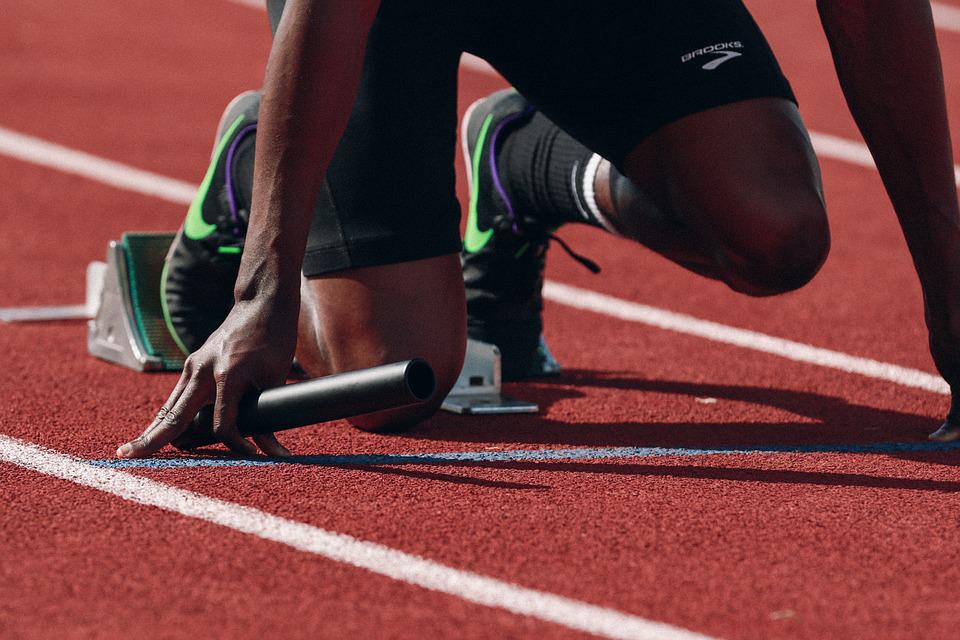The term “sports performance training” is becoming increasingly popular among athletes and coaches. Although it may appear to be simply another way to describe working out, it is actually much more than that.
What is Sports Performance Training?
While there is certainly importance in improving general fitness and being able to perform drills to simulate plays on the field, sports performance training can provide athletes with an extra push to help them reach the next level while also allowing them to continue growing.
This specialized training enhances your athleticism and prepares you for the challenges of your sport. It conditions your body for the activities you will be doing on the playing field.
Sports performance training is catered to your specific needs, which can help you if you hit a skills plateau. This is a common problem for athletes, especially younger ones. They often spend years pushing themselves to become the best player possible.
Athletes who only train for general fitness levels rather than for improved performance are unfortunately stunting their progress. Although they may see some success with their chosen sport, much of their training is only focused on being generally fit rather than on improving performance.
You can improve your performance in a specific sport by doing sport-specific training exercises. This type of training is designed to help your body move in the ways that are specific to your sport. As a result, you’ll be able to better perform the movements required to be successful in your sport. By doing sport-specific training exercises, you will be better able to perform the movements required for success in your sport.
The main issue with only doing basic fitness training is that you might not be preparing yourself for the most important skills required for your sport. For example, if you’re trying to improve your agility or speed, you shouldn’t spend most of your time working on building muscle mass.
Sport-specific performance training routines seek to improve your athleticism in general while also preparing you for the movements you will do during your sport. Many trainers design routines that copy the movements you will do during a game. Your performance training regime will include exercises to help you see improvements in key areas, whether your sport requires good agility, impressive coordination, or brute strength.
Additional Benefits
In addition to improving skills on the field, sports performance training can also bring a number of other benefits to athletes. These are benefits that many people don’t consider at first, so it’s worth exploring them in more detail.
Lower Chance Of Injury
Sports performance training can help to lower the chance of getting injured while playing sports. This is because the training can help to improve the strength, flexibility, and power of the muscles and connective tissues. This can help to prevent injuries that are caused by overuse or sudden impact.
Many sports injuries are caused by poor training methods that don’t put any stress on important ligaments and tendons. General fitness training only strengthens muscles and improves endurance, but won’t help when you have to do a complex move during a game.
One false move can cause a tendon to tear. For example, a torn ACL is a common injury in fast-paced sports. An awkward rebound or twist of the leg puts extreme stress on this delicate tendon, causing it to tear.
If you regularly train using performance methods, you will regularly be doing complex maneuvers. This will help to strengthen the ligaments and tendons, reducing the chances of injury during a game.
Additionally, you are enhancing your overall nimbleness, elasticity, and coordination. By habitually doing comparable exercises during your training, your body is better able to sustain your actions during a game.
Isolating Weaknesses
Sports performance training helps to identify your weaknesses so that you can work on them. Thanks to the fast-paced nature of competitive sports, it is easy to overlook areas that need improvement. As a result, many athletes will just ignore the issue or blame an undesirable outcome on a bad play.
Performance training can help you identify areas that need improvement, whether it’s hand-eye coordination or jumping ability. You can then develop a training routine that addresses the issue, incorporating exercises to improve those weak skills. As a result, you’ll see a noticeable improvement in your technique and overall performance.
Mental Improvements
If your mind is not properly in sync with your body, your performance will suffer. Developing a strong mind-body connection can help you play with greater awareness, poise, and confidence. Performance training can also help athletes to become more emotionally resilient. In order to succeed in sports, you have to be able to handle disappointment and failure. You need to be able to keep a level head and stay positive even when things are not going your way. Training can help you to develop this emotional resilience and become more mentally tough. Sports performance training can provide athletes with benefits both mental and emotional. On the mental front, it can strengthen the mind-body connection, something that is important for success in any sport as it requires extreme mental coordination. Developing a strong mind-body connection can help an athlete play with greater awareness, poise and confidence. Emotionally, training can help to develop emotional resilience, which is the ability to keep a level head and stay positive even when things are not going well.
Performance-based exercises that challenge your mind improve your coordination and reaction times and teach you how to perform moves more efficiently.
Sports Performance: 5 Reasons to Train Athletes
There are many more factors to consider, modalities to incorporate, and strategies to employ when coaching an athlete than when working with general population clients. Coaching athletes can be more fulfilling than working with the general population, as there are more opportunities to help them grow and improve.
Here are 5 reasons why you, as a sports performance professional, should train athletes:
-
You become more observant in the initial meeting and assessment
When coaching athletes of any kind, the coach must consider several factors:
- The athlete’s level of training experience
- Biological and chronological age
- Current physical condition
- Physiological and movement specific components of the sport they participate in
- Nutritional needs
- Injury history
- External life stressors
Both internal and external stress can have a big impact on how well someone does in athletics, so it’s important to take both into account when coming up with a training program.
The coach should start by learning about the athlete’s training, medical, and injury history, and finding out about their diet and social constraints that may influence training.
After interviewing the athlete, the coach should do a complete assessment of their movement, looking for any areas of strength or weakness. This data will be used in the future to help plan corrective exercises.
In addition, researching the athlete’s sport before the coach begins programming may be extremely helpful.
The coach can improve performance outcomes for their new client by evaluating the physiological components of the sport, such as intensity and duration of playtime, as well as the movements and anatomical positions frequently employed within the sport.
The coach can create a custom program to help the athlete with their strength, power, and conditioning based on where they are in the sports season.
-
You learn and implement “sport specificity” – nothing is random
The ‘SAID Principle’, states that the adaptations our body makes to the activities and training we do are specific to the demands we regularly encounter.
When developing a program for an athlete, you should make attempts to connect the specific adaptations to imposed demands principle with what occurs within the sport, to improve performance in practice and competition. We refer to this as “sport-specific” training. A sport-specific program takes into consideration the primary muscles, movement patterns, contraction phases, and joint actions observed during the sport in question.
A sport-specific training program that builds on adaptations that transfer into improved performance outcomes will promote resistance training and conditioning. While weight training cannot be entirely “sport-specific,” as participation in the sport itself will yield the most significant improvements, a sport-specific training program can build on adaptations that transfer into improved performance outcomes.
-
You learn how to optimally organize a program
This text is saying that if you want to improve your performance in a certain sport, you need to specifically train for that sport using the energy system required for that sport.
The design of an athletic training program should involve choosing the right type of activity and doing it at the right time and frequency to improve performance.
Having athletes follow a set plan allows the coach to systematically improve different aspects of their performance, like their movement technique, their speed or strength, or their endurance. It also lets the coach work on improving the athlete’s body composition.
If you don’t change your training stimulus, your performance won’t change either. However, if you make unnecessary changes or extremely increase the intensity of your training, your performance will suffer because you’ll be too tired and won’t be able to recover properly between sessions.
In order for an athlete to heal properly, they must train regularly in an organized and effective manner that takes into consideration their commitments outside of athletics, such as school or work. Other internal and external factors, like nutrition and injuries, must also be taken into account.
If there is no structure or purpose to training, athletes will not be motivated to train or see any progress.
-
You will learn how to make purposeful decisions in exercise selection
The most intense and complicated programming exercises should be done at the beginning of the session, for both safety reasons and to ensure that the exercises are performed with the most effort. The specific exercises and the amount of weight to be lifted during these initial exercises will depend on the phase of the annual program, which can be stabilization endurance, strength endurance, hypertrophy, maximal strength, or power output.
The program then moves into complementary accessory exercises to improve any areas of weakness, fix movement patterns, and/or build muscle mass.
You may choose to do unilateral or asymmetrical movements for this section of the training session. Studies show that doing these types of movements can improve your ability to generate force, move quickly, and keep your joints stable. They can also help make your muscles more symmetrical.
All of these variables are important for the athlete’s maximal strength, athleticism, and wellbeing. Isolation exercises can help improve muscle size, endurance, and/or weaknesses, and are usually done at the end of a workout, after multi-joint movements. Implementing isolation exercises can also help improve strength in bilateral movements and reduce the risk of injuries by developing weaker muscles.
There is a correlation between muscle mass and strength improvements, mainly as an athlete gains lifting experience, illustrating the benefits in a variety of training strategies that develop multiple physiological variables.
The last part of an athlete’s program often consists of exercises to improve strength and stability in the core muscles. For athletes who play contact sports, having a strong and stable core is essential to preventing internal injuries when they clash with other players.
The evidence shows that it is very important to have strong trunk muscles in order to prevent internal structures from collapsing. This is especially important for athletes who are trying to achieve maximal strength and performance.
Having strong core muscles is important for transferring force from the lower to upper body, which can make you faster and stronger. It can also help prevent injuries to the lower back and legs.
-
You learn how to optimally program acute variables for each phase and exercise
Skeletal muscle and physiological processes are very adaptable to the specific demands placed on them regularly. Therefore, it is crucial to manipulate key acute variables in effective and progressive strength and conditioning programs. It is possible to optimize muscular strength, hypertrophy, neuromuscular and physiological adaptations through periodization of acute variables.
Of all the resistance training factors that help induce specific adaptations, volume and intensity are believed to be the most important.
Conclusion
Being a fitness professional involves constantly learning new things about physiology and coaching in order to be the best possible coach for athletes.
Having coaching experience can improve you as an educator and have a positive effect on the athletes you work with.
If you become a coach, you will never stop learning, you will always have new things to explore, and you will be able to have a significant impact on many people’s lives.







